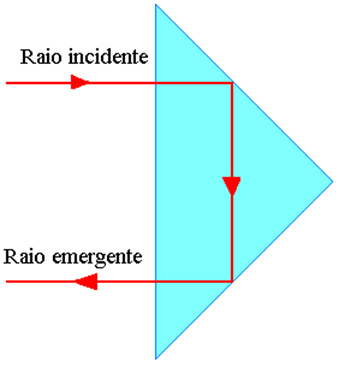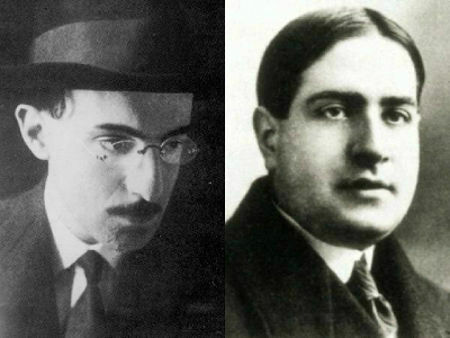In the figure above we have a prism. We can define it as a geometric solid formed by a top face and a bottom face, parallel and congruent (also called bases), connected by edges. Let's look at the rays passing through the straight prism in the figure below. We noticed that such rays enter the prism perpendicularly to face A, undergo a total internal reflection on face B (prism hypotenuse) and exit perpendicularly to face C.
By locking several rays, we can see how the prism changes the position of the image.

The prisms used in many cameras are pentaprisms, which rotate the image through a right angle, resulting in a straight image for the photographer. In the pentaprism, the image undergoes reflections on the surface without undergoing inversion. The incidence angles on these surfaces do not allow for full internal reflection, and need to be mirrored externally with a thin layer of aluminum.
The Porro prism is a straight prism used when you want to invert the image in just one axis. In this prism, the rays enter the face corresponding to the hypotenuse and pass through two total internal reflections, emerging again through the hypotenuse.
The rays enter through the hypotenuse and undergo total internal reflection on the faces corresponding to the sides of the triangle. Note, in the figure below, that if we place an image in front of this prism, we will see that it will be inverted in only one direction.

By Domitiano Marques
Graduated in Physics
Source: Brazil School - https://brasilescola.uol.com.br/fisica/inversao-imagem-um-prisma.htm

